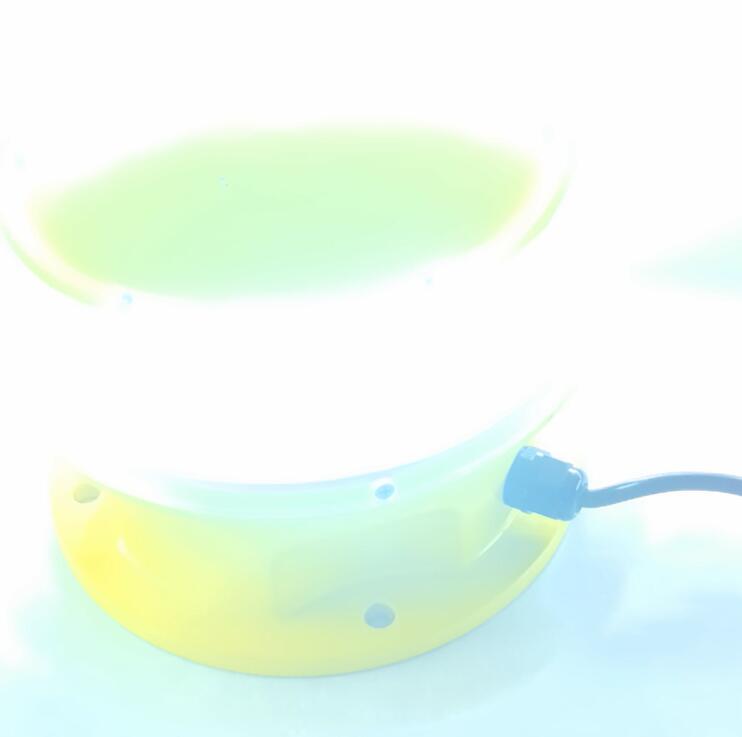Posted: 2025-08-04
In the complex ecosystem of aviation safety, airfield obstruction lights serve as critical visual aids that protect both aircraft and infrastructure. These specialized lighting systems identify potential hazards near airports and helipads, ensuring safe navigation during all weather conditions. This article examines the vital role of airfield obstruction lights, their technical specifications, installation best practices, and emerging innovations in the field.
The Critical Role of Airfield Obstruction Lights
Aviation authorities worldwide mandate airfield obstruction lights to mark structures that could endanger low-flying aircraft, particularly during takeoff and landing. Key functions include:
Preventing collisions with towers, cranes, buildings, and other tall structures near flight paths

Enhancing visibility during nighttime, fog, and adverse weather conditions
Complying with international regulations (ICAO, FAA, EASA standards)
Supporting helicopter operations in urban and remote environments
Without proper obstruction lighting, the risk of accidents increases significantly, especially in congested airspace or near busy airports.
| airfield obstruction light |
Types of Airfield Obstruction Lights
Different lighting systems are deployed based on structure height, location, and specific aviation requirements:
1. Low-Intensity Obstruction Lights (L-810)
Used for structures below 45 meters (148 feet)
Steady-burning red lights for nighttime visibility
| airfield obstruction lights |
Common on small buildings, perimeter fences, and equipment near runways
2. Medium-Intensity Obstruction Lights (L-864)
Suitable for structures between 45-150 meters (148-492 feet)
Available in red (Type A) or white strobe (Type B) variants
Often installed on airport control towers and nearby high-rise buildings
3. High-Intensity Obstruction Lights (L-856)
Required for structures exceeding 150 meters (492 feet)
Powerful white strobes visible for long distances
Used for tall communication towers and wind farms near flight paths
4. Dual Lighting Systems
Combine red lights for nighttime and white strobes for daytime
Ensure 24/7 visibility in all conditions
Frequently used for extremely tall or critical structures
Technical Considerations for Effective Implementation
1. Light Placement and Spacing
Top-mounted lights on the highest point of the structure
Intermediate lights spaced every 45 meters on very tall objects
Multiple lighting angles to ensure visibility from all approach paths
2. Power Supply and Reliability
Dual power sources (main + backup) for critical installations
Battery backup systems for uninterrupted operation
Surge protection for lightning-prone areas
3. Photocell and Control Systems
Automatic dusk-to-dawn operation
Light sensors for adaptive brightness control
Remote monitoring capabilities for maintenance alerts
Best Practices for Airfield Obstruction Light Installation
Regulatory Compliance
Follow ICAO Annex 14 and local aviation authority guidelines
Obtain necessary approvals before installation
Site-Specific Risk Assessment
Evaluate structure height, location relative to flight paths
Consider terrain and surrounding obstacles
Maintenance Protocols
Regular cleaning of lenses and solar panels (if applicable)
Scheduled bulb/LED replacements
Periodic system functionality tests
Pilot Visibility Testing
Verify light visibility from cockpit perspective
Adjust intensity if causing glare or distraction
Emerging Technologies in Obstruction Lighting
The field of airfield obstruction lights is evolving with several promising innovations:
1. LED Advancements
Longer lifespan (50,000+ hours)
Energy efficiency and reduced maintenance
Tunable light intensity based on conditions
2. Smart Monitoring Systems
IoT-enabled diagnostics for predictive maintenance
Real-time status reporting to air traffic control
Automated fault detection and alerts
3. Sustainable Solutions
Solar-powered units for remote installations
Energy storage improvements for consistent operation
4. Enhanced Visibility Systems
Synchronized flashing patterns for better recognition
Integration with radar and ADS-B systems
New lighting colors for improved contrast
Global Standards and Regulations
International aviation organizations maintain strict guidelines for airfield obstruction lights:
ICAO (International Civil Aviation Organization): Annex 14 specifies light types, intensities, and placement
FAA (Federal Aviation Administration): AC 70/7460-1L details U.S. requirements
EASA (European Union Aviation Safety Agency): CS-ADR-DSN standards for European airfields
IEC (International Electrotechnical Commission): Technical standards for light performance
Compliance with these standards is mandatory for all permanent and temporary structures near airports.
Special Applications
Beyond traditional airport environments, airfield obstruction lights serve crucial roles in:
Helipads: Marking hospital and urban rooftop landing sites
Wind Farms: Warning systems for turbine clusters
Military Installations: Special lighting for secure airbases
Temporary Structures: Construction cranes and event installations
Airfield obstruction lights form an indispensable component of modern aviation safety infrastructure. As air traffic continues to grow and urban development expands near airports, these lighting systems will play an increasingly vital role in preventing accidents and ensuring smooth operations. The ongoing technological advancements in LED efficiency, smart monitoring, and sustainable power solutions promise to further enhance their effectiveness.
Aviation authorities, construction firms, and airport operators must prioritize proper installation, maintenance, and innovation in airfield obstruction lighting systems. By doing so, they contribute to safer skies and more efficient airfield operations worldwide. The continued evolution of these systems will be crucial in meeting the challenges of future aviation growth and urban development.